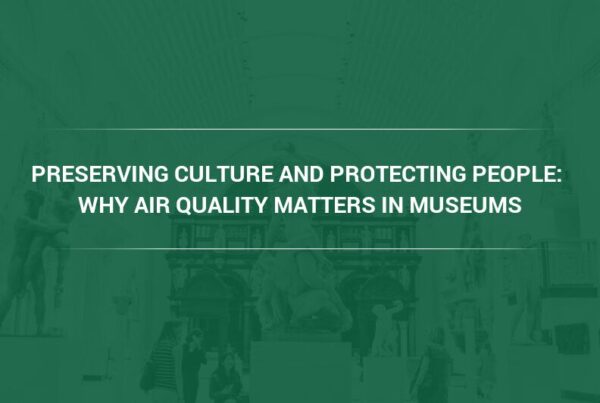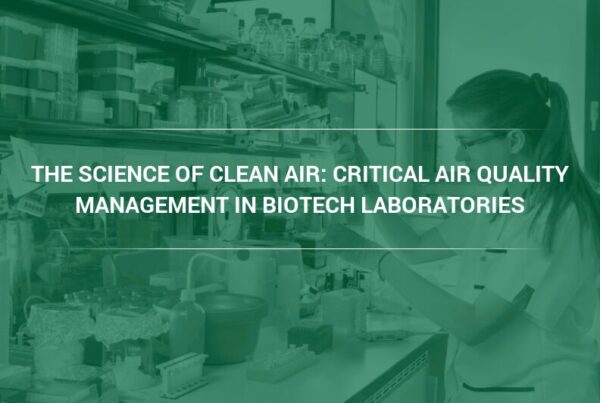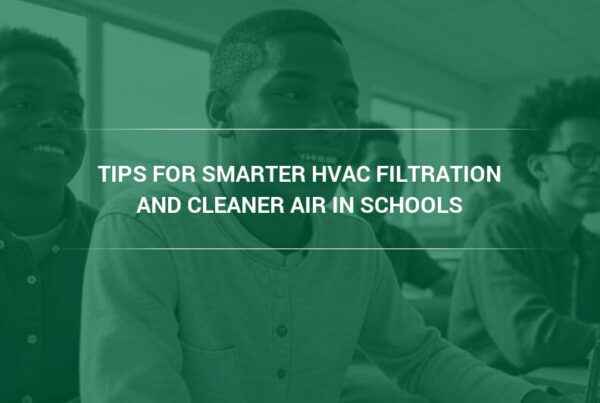The rapid expansion of electric vehicle production has intensified focus on lithium-ion battery manufacturing processes. This paper examines the critical role of air quality management in battery cell production facilities, analyzing the intersection of worker safety, product quality, and operational efficiency.
The Hidden Crisis in Battery Manufacturing
The electric vehicle revolution faces a critical challenge that threatens both human health and production efficiency: airborne contamination in battery cell manufacturing facilities. Recent industry analysis reveals that contamination control failures can reduce manufacturing yields to as low as 50%, representing millions of dollars in lost productivity and compromised product quality ¹.
READ: The Crucial Role of Air Quality Control in EV Battery Production Plants
The Magnitude of the Problem
Manufacturing lithium-ion batteries generates multiple categories of airborne contaminants that pose significant risks:
- Particulate matter from electrode materials and separator components
- Toxic gases released during chemical processes
- Metal particles that can puncture critical battery separators
- Moisture contamination in ultra-low humidity environments
The stakes are particularly high given that clean materials account for 85% of the pack process materials cost in lithium-ion battery production ¹. This statistic underscores how contamination directly impacts the bottom line of battery manufacturers, making air quality management not just a safety issue, but a business imperative.
Understanding the Complex Air Quality Challenges
Environmental Control Requirements
Battery cell production demands unprecedented environmental precision. Manufacturing facilities must maintain relative humidity levels corresponding to dew point temperatures as low as -94°F (-70°C) ¹. This extreme requirement necessitates completely sealed manufacturing environments where any moisture intrusion can compromise entire production batches.
Manufacturing Process Vulnerabilities
The intricate nature of lithium-ion battery construction creates multiple contamination risks:
Separator Integrity: Battery cells contain delicate separators that maintain critical separation between anodes and cathodes. Even microscopic metal particles can puncture these separators, causing short circuits and potentially dangerous battery failures ¹.
Chemical Process Emissions: Different lithium-ion battery chemistries produce varying types and concentrations of airborne contaminants. Each chemistry requires specific filtration approaches to address its unique emission profile.
Laser Manufacturing Processes: Modern battery production increasingly relies on laser technology, which generates specific types of dust and fumes that require controlled extraction to prevent contamination and protect personnel ¹.
Worker Health and Safety Implications
Beyond product quality concerns, battery manufacturing creates significant occupational health risks. The production process generates particulates, gases, and toxins that threaten both facility workers and external stakeholders ¹. These health risks extend beyond immediate facility boundaries, creating potential liability and regulatory compliance challenges.
Energy Efficiency Challenges
Air quality management systems represent a significant operational cost center. HVAC systems can account for over 50% of total facility energy consumption, with air filtration systems responsible for approximately 30% of this energy demand ¹. This creates a critical balance between maintaining air quality standards and controlling operational costs.
The Compelling Benefits of Advanced Air Quality Solutions
Yield Improvements
Proper contamination control transforms manufacturing economics. When contaminant levels are properly managed, facilities can achieve yield improvements from the baseline 50% to significantly higher levels ¹. This improvement directly translates to:
- Reduced material waste and associated costs
- Increased production capacity from existing facilities
- Enhanced product reliability and customer satisfaction
- Faster market adoption of electric vehicle technology
Enhanced Product Performance
Clean manufacturing environments produce superior battery cells with improved performance characteristics. Better air quality control leads to:
- Longer battery life cycles due to reduced internal contamination
- Higher energy density through cleaner electrode interfaces
- Improved safety profiles with reduced short-circuit risks
- More consistent performance across production batches
Regulatory Compliance and Risk Mitigation
Advanced air filtration systems ensure compliance with increasingly stringent environmental and safety regulations. This proactive approach provides:
- Protection from regulatory penalties and production shutdowns
- Reduced liability exposure from worker health incidents
- Enhanced corporate reputation and stakeholder confidence
- Simplified regulatory reporting and compliance documentation
Sustainable Operations and Carbon Neutrality
Modern air filtration solutions support sustainability initiatives that are increasingly important to corporate stakeholders:
Energy Optimization: High-efficiency air filtration systems with optimal pressure drop characteristics reduce overall energy consumption while maintaining superior air quality ¹.
Carbon Footprint Reduction: Energy-efficient HVAC and filtration systems contribute significantly to “Net Carbon Zero” initiatives that many leading brands have adopted ¹.
Waste Reduction: Longer-lasting, high-performance filters reduce disposal requirements and associated environmental impacts.
Economic Return on Investment
The total cost of ownership for air filtration systems extends far beyond initial purchase price. Comprehensive cost analysis reveals that energy, maintenance, and disposal costs represent the majority of long-term expenditures ¹. Advanced filtration solutions deliver:
- Lower energy consumption through optimized pressure drop designs
- Extended filter life reduces replacement frequency and costs
- Reduced maintenance requirements and associated downtime
- Improved overall equipment effectiveness (OEE)
Implementing Comprehensive Air Quality Solutions
Immediate Implementation Steps
- Conduct Comprehensive Facility Assessment
- Evaluate current contamination control systems against industry best practices
- Identify specific airborne contaminants generated by your battery chemistry and processes
- Assess current yield rates and correlate with air quality metrics
- Review energy consumption patterns and identify optimization opportunities
- Deploy High-Efficiency Particulate Air (HEPA) Filtration HEPA filters serve as the foundation for controlled environments where precision, purity, and protection are paramount ¹. Implementation should focus on:
- Strategic placement throughout manufacturing areas
- Ensure compatibility with existing HVAC systems
- Protect HEPA filters with high-quality prefiltration
- Proper sizing for anticipated contamination loads
- Regular monitoring and replacement protocols
- Implement Molecular Contamination Control with high volume solutions such as gas-phase cylinder filters that incorporate engineered approaches for energy and maintenance cost savings in molecular contamination control applications ¹. Key implementation elements include:
- Targeted gas-phase filtration for specific chemical contaminants
- Integration with humidity control systems
- Real-time monitoring of molecular contamination levels
- Add dust, fume and mist collectors for particularly challenging applications
- Dust collectors with cartridge filters for high-volume dust loads
- Place near contamination sources for maximum effectiveness
- Safeguard against combustible dust
Long-term Strategic Initiatives
Energy Cost Index (ECI) Optimization – Implement 5-Star Rating System standards for air filter performance to achieve recognition for energy savings, waste reduction, carbon footprint improvement, and indoor air quality enhancement ¹.
READ: Long-Term Cost-Saving Strategies: The Real ROI of Clean Air
Controlled Environment Protocols – Develop comprehensive protocols that protect critical processes and personnel while maintaining high levels of air cleanliness essential for product protection and hazardous compound containment ¹.
Continuous Improvement Programs – Establish ongoing programs for:
- Regular air quality monitoring and trend analysis
- Yield correlation studies linking air quality to production outcomes
- Energy efficiency optimization
- Technology updates and system improvements
Measuring Success
Key Performance Indicators (KPIs)
- Manufacturing yield improvements
- Energy consumption reduction (targeting 30% improvement in filtration-related energy use)
- Worker health incident reduction
- Regulatory compliance scores
- Overall equipment effectiveness (OEE) improvements
- Customer quality metrics and warranty claims
Return on Investment Metrics
- Payback period calculation based on yield improvements
- Total cost of ownership analysis
- Energy savings quantification
- Risk mitigation value assessment
Conclusion
The transition to electric mobility depends critically on the ability to manufacture high-quality, reliable lithium-ion batteries at scale. Air quality management emerges as a fundamental enabler of this transition, directly impacting worker safety, product quality, operational efficiency, and environmental sustainability.
The evidence presented demonstrates that advanced air filtration solutions deliver measurable benefits across multiple dimensions—from dramatic yield improvements to significant energy cost reductions. As the e-mobility market continues its rapid expansion, manufacturers who proactively address air quality challenges will gain substantial competitive advantages in safety, efficiency, and product quality.
The path forward requires immediate action on contamination control systems, combined with long-term strategic planning for sustainable operations. By implementing comprehensive air quality solutions, battery manufacturers can simultaneously protect their workforce, improve their products, reduce their environmental impact, and enhance their profitability.
The question is not whether to invest in advanced air quality systems, but how quickly these critical improvements can be implemented to capture the full benefits of clean air technology in e-mobility battery manufacturing.
References
¹ Camfil. (2024). E-mobility battery cell plants. Camfil Clean Air Solutions. Retrieved from https://www.camfil.com/en-us/industries/transportation/e-mobility-battery-cell-plants
This paper was developed as an educational resource for battery manufacturing professionals seeking to optimize their air quality management systems. For specific technical guidance and solution implementation support, consult with certified air filtration specialists at Camfil USA



